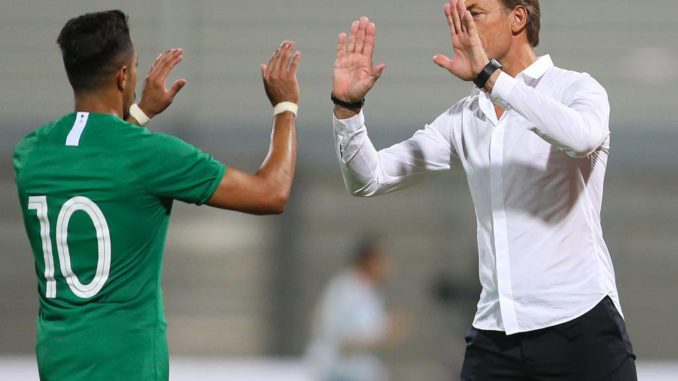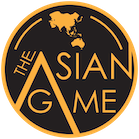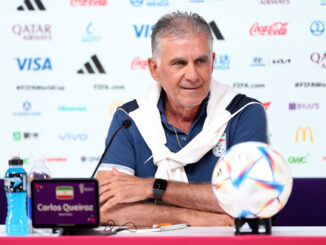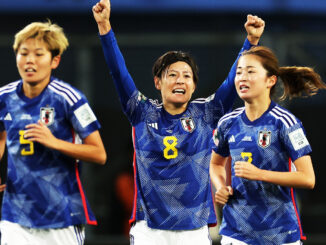
Identity in football is hot business at the moment, and like anything that is proven to walk hand-in-hand with success, a unified vision, style or philosophy is one that is currently being striven for across the world.
While club identity is easily malleable, a nation’s identity, once seen as sacrosanct, is anything but. With Asian football keen on taking things to the next level however, we’re increasingly seeing change in this area heading into a new World Cup qualification cycle.
The Saudi flip flop
No national association has experimented more of late than the Saudi Arabia Football Federation (SAFF). While it could be argued neighbouring associations have turned their back on footballing progress and focused more on the money they can channel out of it, the SAFF have continually looked to invest and challenge the progress of the national team and the standard of their domestic league.
The appointment of Herve Renard over the summer was a real coup, an example of how much financial and persuasive sway the SAFF have. One of the most sought after coaches outside of Europe, Renard has a promising record of establishing talented individuals into a cohesive unit. A perfect match for Saudi Arabia, a national team that has long been punching below its weight in Asia; plenty of quality, but lacking the harmony.
That of course was until a certain Dutchman; Bert van Marwijk entered ahead of the last World Cup cycle, going on to clinch direct qualification for the first time in 12 years, playing a style of football that was symbolic to the nation’s footballing identity; fast, direct, physical and utterly devastating.
But upon conclusion, van Marwijk’s time was up; coach and federation clashed over residency issues and pre-tournament plans. The SAFF made the about turn to change philosophy altogether, swinging the pendulum to former Chile coach Juan Antonio Pizzi.
Pizzi, spurred on by his employer’s ambition of aesthetic, future thinking football, set about recreating a country’s style from the ground up. Star players were shipped out on loan to Spain, youth team structures were overhauled, while the national team had a complete style revamp.
Out went the traits that got them to this position, intrinsic of a whole generation of Saudi players; in came demands of increased composure in possession (from keeper up to centre forward), slow transition (inviting and capitalising on the press) and fluid positional shifting.
It was no wonder in hindsight that Saudi Arabia fell at two successive major tournaments; crashing out of the group stage of the World Cup, before limping through to a Round of 16 exit at the Asian Cup. The personnel didn’t have the required bedding in period to switch styles so effortlessly, those who went out on loan, despite showing signs of improvement failed to accrue minutes, while considerations of comparable quality with their peers was starting to hit home.
To their credit the SAFF stuck with Pizzi longer than many imagined, especially given their global showing in Russia. Yet, what were they going to do? Investment had been willing, transformation had been persisted with, who was going to turn their back on something that was unanimously backed 18 months prior? In the end, results will almost always trump ideology, the SAFF’s hand was forced; Pizzi exited, Renard entered.
As expected, Renard’s tenure has already started to rewrite the national team picture. One match into his reign (Thursday’s 1-1 draw with Mali), Saudi Arabia returned to their more conservative, reactionary origins, but without the passion and speed van Marwijk was able to harness during World Cup qualification.
We’re one (uncompetitive) match into a new World Cup cycle, so it’s naive to make any sweeping statements of what’s to come; but one things for sure Saudi Arabia are back to square one on the identity front. The action of change doesn’t necessarily correlate to instant success, as their regional rivals, persisting with a more long term approach will attest to.
Long term planning delivers results
Qatar’s vision of creating a whole new footballing structure, from academy right through to national team, is as long term as you can get. And while the primary objective was to improve the quality of the players within its ranks; no one should write off the symbolism of having a well honed style that the entire squad believes in.
Embed from Getty ImagesA squad that was home with one another, and crucially with their coach Felix Sanchez, was the true catalyst behind Qatar’s triumph at January’s AFC Asian Cup, not through a particularly star-studded side. The penny is starting to drop; irrespective of the talent you possess, consistency in approach can bring you success.
Two of the most trigger happy nations in Asia; Jordan and Iraq have sought to embrace this. Renewing the managerial contracts of Vital Borkelmans and Srecko Katanec post-Asian Cup wasn’t a sign that either had produced particularly remarkable results, instead an appreciation that their job was only half done.
Borkelmans in particular has carved a direct strategy that is becoming succinctly Jordanian; opposed to the disorganised mess that usually greeted fans during numerous short managerial reigns of the recent past.
West Asia isn’t the only region to take a longer term view on things. Over the last few years, Southeast Asia is finally awakening from its slumber as a real contender on the international stage. Vietnam, under Korean coach Park Hang-seo, has developed and cascaded a well honed counterattacking identity, with clear designations for it’s personnel.
In a way, Park’s rekindlement of all that is successful in Southeast Asian footballing culture; busy, quick and sharp play has been harnessed with a system that better suits their ability. Finding a perfect way of playing that compliments a nation’s profile is one thing; how to marry this up with expectation is another.
Style or substance; Asia’s big four struggle to find the right balance
The big four in Asia have all been through transitional periods to one degree or another over the last few years, many of them have and will continue to experience change in philosophies offset by the level of expectation put upon their shoulders heading into a new international cycle.
South Korea, you could say endured a tough spell with Uli Stielike at the helm. Many will scoff at the idea that this was somehow a difficult period for Korean football, having made an AFC Asian Cup final, and looking likely to progress to yet another World Cup over that period, yet his style was so un-Korean, meeting paper objectives in the end didn’t matter. A defensive setup, that was designed to make the most of isolated attacks was too much for some to take, despite the accolades it brought.
Similarly, Japan under Bosnian coach Vahid Halilhodzic were starting to finalise an edge, some nous and a direct, impactful approach, before sacking their head coach out of the blue ahead of last year’s World Cup despite being in solid form.
The subsequent in-house appointment of Akira Nishino, followed closely by Hajime Moriyasu, were made specifically to reintroduce the Japanese identity of play; a million miles away from the “get smarter” attitude Halilhodzic persisted with.
Embed from Getty ImagesThe balancing act between style and substance is one that is incredibly difficult to juggle. Despite clinching a maiden AFC Asian Cup, Ange Postecoglou’s time as Australia coach was increasingly trying.
His attack focused ambition, that ran into trouble late on, was too much for a footballing fraternity that expected a certain standing; scraping through against Syria wasn’t deemed good enough irrespective of the way they were doing it.
And with Iran, Asia’s prized diamond over the last few years, ideology and how they look to move to the next level is quite attently in focus. Replacing the grandeur of Carlos Queiroz is a mammoth test at the best of times, but managing the transition from defensive stalwarts, to a proactive attacking mentality, that their ever-improving squad demands is proving hard for some of their fans to grasp hold of.
A narrowing field; minnows start to close the gap
Uncertainty, a preference to standstill at the top and the heavy burden of expectation all add to a continental footballing landscape which is narrowing year-on-year.
The renovation of World Cup qualification and the expansion of the AFC Asian Cup have both helped the progress of the middle-to-lower ranked member associations, however the willingness to learn and improve, whilst observing they can truly compete at the next level is starting to enact change.
Previous minnows are now becoming some of the most exciting prospects to watch; Philippines under the guidance of Scott Cooper, continue to set up on a positive footing (if on occasion, as their 5-2 defeat to Syria attests, they are still a work in progress defensively), Turkmenistan are shaking off their cautious inward-looking past by appointing a foreign coach for the first time in their history, while Taiwan are looking at making great strides past their regional glass ceiling under English coach Louis Lancaster.
Rather pleasingly, the trend for positive, attacking football, which is pertinently in vogue across Europe, is being replicated in Asia.
It’s no coincidence that two of the biggest underachievers in Asia are still left with question marks beside them. China and Uzbekistan, continue to go over old ground, relying on prestigious but arguably outdated coaches.
But the question mark against most remains the same, who can afford to take a sustained risk away from the perceived tried and trusted?
Saudi Arabia start their World Cup qualification campaign away against Yemen (in Bahrain) on Tuesday evening. While a return to a physical, direct, individual style of play probably suits the capabilities of this current squad, such turmoil presented with a regular ideological shift over the last few years could well come back to bite them on the backside.
Renard has an impressive reputation for rallying a squad round a cause, but it’s to be seen if they can rekindle the same sort of unity that saw the Green Falcons flourish four years ago.
Photo: Twitter/SaudiNT
Listen to Martin, Scott and Paul review all the action from Matchday One if FIFA World Cup Qualifying




